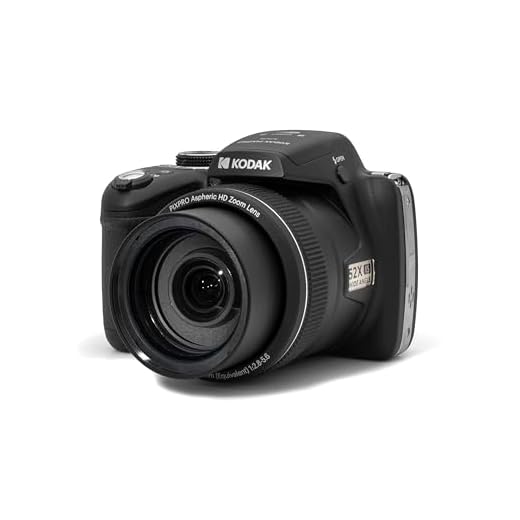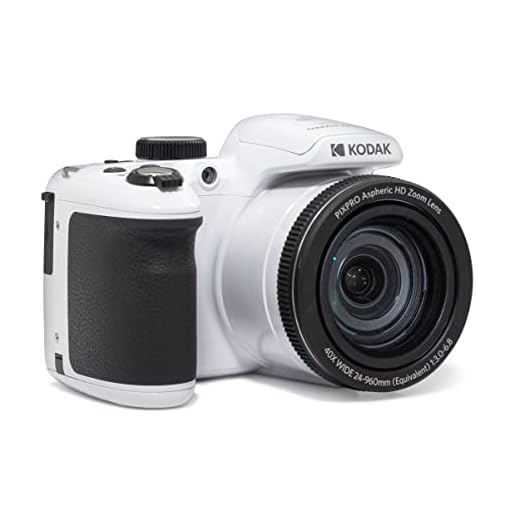




Are you in the market for a new digital camera but feeling overwhelmed by the countless options available? Choosing the right camera can be a daunting task, especially with the rapid advancements in technology and the wide array of features to consider. To help you make an informed decision, we’ve put together a quiz that will guide you through the process of selecting the perfect digital camera for your needs.
Before you dive into the quiz, it’s essential to understand what factors are crucial when choosing a digital camera. Consider aspects such as resolution, sensor size, zoom capabilities, and shooting modes. Think about how you plan to use the camera – whether it’s for everyday photography, professional work, or travel adventures.
Our quiz is designed to simplify the camera selection process by asking you targeted questions that will narrow down the options based on your preferences and requirements. By the end of the quiz, you’ll have a clearer idea of the type of digital camera that best suits your photography style and budget.
Best Digital Cameras for Beginners
Choosing the right digital camera as a beginner can be overwhelming with so many options available. Here are some of the best digital cameras that are great for beginners:
1. Canon EOS Rebel T7i
The Canon EOS Rebel T7i is a great entry-level DSLR camera that offers excellent image quality and easy-to-use features for beginners. It has a 24.2MP sensor, fast autofocus, and a vari-angle touchscreen for easy navigation.
2. Nikon D3500
The Nikon D3500 is another excellent choice for beginners. It has a 24.2MP sensor, fast autofocus, and a user-friendly interface. The D3500 is lightweight and compact, making it a great option for beginners who want a portable camera.
3. Sony Alpha A6000
The Sony Alpha A6000 is a mirrorless camera that offers great image quality and fast autofocus. It has a 24.3MP sensor, built-in Wi-Fi, and a tilting LCD screen. The A6000 is a versatile camera that is great for beginners looking to explore photography.
These are just a few of the best digital cameras for beginners. When choosing a camera, consider your budget, photography goals, and desired features to find the perfect fit for your needs.
Factors to Consider When Choosing a Camera
When choosing a digital camera, there are several important factors to consider to ensure you get the best camera for your needs:
1. Camera Type
Decide whether you want a point-and-shoot camera, a mirrorless camera, or a DSLR. Each type has its own advantages and disadvantages, so choose based on your photography goals and preferences.
2. Megapixels
Consider the resolution of the camera sensor in megapixels. Higher megapixels can provide more detailed images, but they also require more storage space. Choose a resolution that meets your needs without being excessive.
Other factors to consider include:
- Size and weight of the camera
- Zoom range and lens options
- Image stabilization features
- Low-light performance
- Battery life
- Connectivity options (Wi-Fi, Bluetooth)
- Price and budget
Top Features to Look for in a Digital Camera
When choosing a digital camera, there are several key features you should consider to ensure you get the best camera for your needs. Here are some top features to look for:
1. Megapixels
The number of megapixels determines the resolution of the images produced by the camera. Higher megapixels generally result in sharper and more detailed photos.
2. Optical Zoom
Optical zoom allows you to physically zoom in on a subject without sacrificing image quality. Look for a camera with a higher optical zoom range for better flexibility in capturing distant subjects.
| Feature | Description |
| Megapixels | The resolution of the images produced. |
| Optical Zoom | Allows you to physically zoom in on a subject without quality loss. |
Importance of Megapixels in a Camera
Megapixels are a crucial factor to consider when choosing a digital camera. The number of megapixels determines the resolution and clarity of the images captured by the camera. Higher megapixels result in sharper and more detailed photos, especially when printing or zooming in on the image. However, it’s essential to note that a higher megapixel count doesn’t always guarantee better image quality; other factors like sensor size and lens quality also play a significant role.
Here is a general guide to megapixels:
| Megapixels | Image Quality |
|---|---|
| 4-8 MP | Good for casual photography and social media sharing |
| 8-16 MP | Ideal for printing photos up to 8×10 inches |
| 16+ MP | Suitable for professional photography and large prints |
When choosing a camera based on megapixels, consider your intended use and how you plan to use the photos. A higher megapixel count may be beneficial if you frequently print large images or need to crop and edit photos extensively. However, for everyday use and social media sharing, a moderate megapixel count may suffice, saving you storage space and processing power.
Benefits of Optical Zoom in a Camera
Optical zoom is a key feature to consider when choosing a digital camera. Here are some of the benefits of optical zoom:
- Higher Image Quality: Optical zoom maintains the image quality even when zooming in, as it physically adjusts the lens to magnify the image.
- Greater Flexibility: Optical zoom allows you to get closer to the subject without sacrificing image quality, giving you more flexibility in framing your shots.
- Enhanced Detail: With optical zoom, you can capture more details in your photos by zooming in on specific areas without losing clarity.
Understanding Different Camera Sensor Types
When choosing a digital camera, one of the key factors to consider is the type of sensor it uses. Camera sensors come in various types, each with its own strengths and weaknesses. Here are some common sensor types:
| CMOS (Complementary Metal-Oxide-Semiconductor) | CMOS sensors are popular due to their low power consumption and affordability. They are commonly found in entry-level and mid-range cameras. |
| CCD (Charge-Coupled Device) | CCD sensors tend to produce high-quality images with low noise levels, making them ideal for professional and high-end cameras. |
| BSI (Backside Illuminated) | BSI sensors are designed to improve light sensitivity and overall image quality. They are often used in smartphones and compact cameras. |
| APS-C (Advanced Photo System type-C) | APS-C sensors are larger than those found in compact cameras, offering better image quality and low-light performance. They are commonly used in DSLR and mirrorless cameras. |
Understanding the different camera sensor types can help you make an informed decision when choosing a digital camera that meets your photography needs.
Comparison of DSLR vs Mirrorless Cameras
When choosing between a DSLR (Digital Single-Lens Reflex) camera and a mirrorless camera, there are several key differences to consider.
Size and Weight: Mirrorless cameras are generally smaller and lighter than DSLRs, making them more portable and easier to carry around.
Autofocus: DSLRs typically have faster autofocus systems due to their use of a separate phase-detection autofocus module.
Viewfinder: DSLRs use an optical viewfinder, while mirrorless cameras use an electronic viewfinder (EVF) or rely on the rear LCD screen for framing.
Battery Life: DSLRs usually have longer battery life compared to mirrorless cameras, which may require carrying extra batteries for extended shooting sessions.
Lens Selection: DSLRs have a wider range of compatible lenses available, including many legacy lenses, while mirrorless cameras have a growing selection of native lenses.
Image Quality: Both DSLRs and mirrorless cameras can produce high-quality images, but the choice of sensor size and lens quality can impact image quality.
Consider these factors when deciding between a DSLR and a mirrorless camera to find the best option for your photography needs.
Importance of Image Stabilization in a Camera
Image stabilization is a crucial feature in a digital camera that helps reduce blurriness and shaky images, especially in low-light conditions or when capturing moving subjects. It minimizes the effects of camera shake, resulting in sharper and clearer photos.
There are two main types of image stabilization: optical and digital. Optical image stabilization physically adjusts the camera lens to counteract movement, while digital stabilization uses software algorithms to reduce blurriness. Optical stabilization is generally more effective and produces better results.
When choosing a digital camera, consider the importance of image stabilization, especially if you plan to shoot in challenging conditions or want to capture fast-moving subjects. A camera with reliable image stabilization can make a significant difference in the quality of your photos.
Tips for Taking Better Photos with Your Camera
1. Learn about your camera: Familiarize yourself with the features and settings of your camera to maximize its potential.
2. Use natural light: Whenever possible, take advantage of natural light for better quality photos.
3. Experiment with composition: Play around with different angles and framing techniques to create visually interesting shots.
4. Keep it steady: Use a tripod or steady your camera to avoid blurry images, especially in low light conditions.
5. Focus on the subject: Ensure your subject is in focus by using the autofocus feature or manually adjusting the focus.
6. Edit selectively: Enhance your photos with editing software, but avoid over-editing to maintain a natural look.
7. Practice regularly: The more you practice, the better you’ll become at capturing great shots with your camera.
| 8. Capture the moment: Be ready to snap photos at any moment to capture spontaneous and memorable shots. |
FAQ
What are the key factors to consider when choosing a digital camera?
When picking a digital camera, it is important to consider factors such as resolution, sensor size, lens quality, zoom capabilities, manual controls, size and weight, battery life, and budget.
Is it better to go for a DSLR or a mirrorless camera?
Both DSLR and mirrorless cameras have their own advantages. DSLRs typically have better battery life and a wider range of lenses available, while mirrorless cameras are more compact and lighter. Your choice would depend on your specific needs and preferences.
What are some recommended digital camera brands to consider?
Some top digital camera brands to consider include Canon, Nikon, Sony, Panasonic, and Fujifilm. These brands are known for their quality cameras with a range of features to suit different photography needs.









